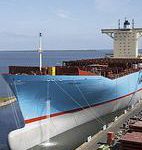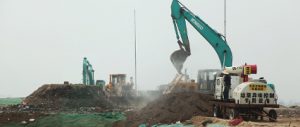China has seen fierce debate over the building of garbage incinerators in recent months. City authorities believe increasing quantities of urban waste make these facilities essential. Developers see them as a source of ongoing income. But nearby residents fear reduced property values and health problems, perhaps even fatal ones.
Expert responses to the dilemma have been unclear and even contradictory, leaving members of the public unsure as to whom they should listen. And with many cities gearing up for faster plant construction, they need to understand what is happening behind the scenes.
Many Chinese cities are already surrounded by landfill sites and can no longer ignore the issue of waste management, so how can this problem be tackled? In fact, the answer should simply be to decrease the quantity of waste produced at one end, and to increase disposal capacity at the other. Currently, however, the government is focused more on disposal capacity. Landfill is the most commonly used method; incineration and use as fertiliser are also options.
As China’s urban population explodes, so does the quantity of waste it produces – by about 10% a year. Landfill sites are overflowing; land itself is an ever scarcer resource. Cities are therefore keen to build incinerators to reduce landfill, which seems logical enough.
However, both landfill and incineration produce secondary pollution. Landfill releases foul odours, toxic fumes and greenhouse gases, while water filtering through the landfill causes hard-to-repair damage to groundwater. Incinerators release foul odours, ash and carcinogens, including dioxins. But still these methods have been used widely for years.
Densely-populated cities always produce waste that will need to be removed and disposed of. Neither landfill nor incineration is ideal, but they are far better than doing nothing – and thus waste disposal is seen as generally seen as beneficial public infrastructure. However, neighbours often find it hard to agree with this assessment. They suffer from the stench, the waste-water runoff, the ash and the carcinogens, not to mention the constant stream of garbage trucks.
The centralised disposal of waste has its benefits for urban residents, but the harm is then unfairly concentrated around those who live near the facility. Incinerators often meet fierce opposition. A resident may see a faraway incinerator as beneficial, when it is but built nearby it becomes a source of toxic gases to be opposed.
In the 1980s, this phenomenon became known as “nimbyism” (from NIMBY: Not In My Backyard). Nimbyism is not limited to incinerators: motorways, airports, communications masts and nuclear power plants are all frequent targets.
The word has a more pejorative connotation when it is used in connection with opposition movements to beneficial infrastructure. Municipal authorities complain that nimby attitudes hinder the efficient organisation of the city; developers view local opposition as unreasonable. Some experts blame nimbyism on a lack of scientific understanding; residents elsewhere in the city lack concern or complain that it prevents improvements to their quality of life.
But nimbyism that starts as the protection of personal interests also acts in the protection of public environmental interests.
Waste incineration has faced public opposition ever since the first plant went into operation in England in 1874. In the 1970s, when the public first became involved in environmental decision-making, governments realised the public would need to be convinced of the need for incinerators. Emissions standards were raised sharply and developers started work on low-emissions incineration technology. Modern incinerators have pollution-reduction equipment installed, resulting in a significant drops in the release of harmful substances – all thanks to the nimbies.
However, while nimbyism sets out to oppose unfairness, in practice it creates its own forms of inequality.
Faced with the risk of local opposition, developers and even governments tend to choose less economically, legally and politically able regions when they select sites. They avoid the most developed cities and shift waste disposal to underdeveloped regions. Globalisation has even resulted in richer nations transporting large quantities of waste to poorer countries.
Research in the United States in the 1980s showed that dangerous infrastructure, including facilities for the disposal of hazardous waste, were more likely to be located near black neighbourhoods. Large-scale protests were organized, and the environmental justice movement began to focus on the protection of the environmental interests of vulnerable populations.
To avoid the transfer of pollution due to nimbyism and other factors, some countries rule that waste must be disposed of locally, or that waste from elsewhere cannot be imported. In 1989, the Basel Convention introduced strict controls on the cross-border movement of hazardous waste.
Environmental justice campaigns managed to rein in the trend of transporting waste to undeveloped regions, and increased the demand for waste disposal facilities in more developed, highly-populated cities, providing a powerful new motive for the construction of incinerators.
Around 20 years ago in Taiwan, many landfills were approaching capacity, so waste disposal was subcontracted out. These subcontractors transported the waste to poorer areas where it was buried, creating environmental and social issues. This spurred the implementation of a “one incinerator per county” policy – but this seemingly fair method ultimately gave rise to more nimbyism. Landfill sites could take no more and the waste could not be moved to rural areas. But incinerators were consistently opposed by locals and environmental groups.
Since waste could not be buried, removed or burned, attention shifted to waste reduction. With the involvement of environmental groups, this became Taiwan’s preferred solution. Research by civil society groups found that the levels of carcinogens released by incinerators in Taipei were far above Californian standards. This raised public awareness of the importance of waste sorting, reduction and recycling in cutting the health risks of incineration.
Quantities of waste fell after Taiwan implemented waste reduction and recycling measures. There were inadequate waste supplies to many incinerators; one-third of planned incinerators remained unbuilt or never went into operation. Taiwan found that a full waste sorting and recycling scheme, combined with the “polluter pays” principle, reduced the overall quantity of rubbish and made real cuts in the risks associated with incineration.
Waste sorting and reduction should be a precondition for the construction of incinerators. Many Chinese cities have made almost no efforts in waste reduction, yet continue to build numerous incinerators, both reducing the efficiency of incineration and increasing the harm they inflict. If waste quantities are reduced in future, there will be a surplus of incineration capacity and subsequent financial losses.
Current oversight in China tends to be weak. The government should increase transparency measures that allow the public to participate in the supervision of incinerator operations and emissions. It is worth studying Taiwan’s experience in this area: in Taipei, there are public supervision committees wherever incinerators are located. Every two months, data on the operation of the plants must be published online, with figures on the release of waste-water, gases and solids available at a glance, and the public entitled to request further explanation. Taiwan’s environmental authorities also publicise the agreements between the incinerators and private businesses. There are even online videos of the unloading platforms, so residents can see at any time what is being burned.
The problem of selecting sites for incinerators will only be solved when the public can participate in these issues, building trust in both government and the incinerator firms.
Ma Jun is director of the Institute of Public and Environmental Affairs
Homepage image from China Digital Times



